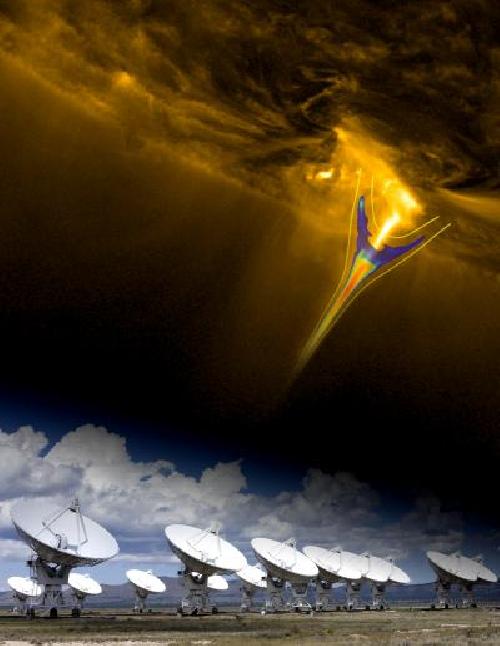Rubbish dumped at sea off Townsville will end up on the popular Mission Beach holiday spot, while Cairns' marine trash goes straight to the exclusive Port Douglas resort -- according to new computer modelling by a James Cook University scientist.
JCU's Kay Critchell fed local wind and tide data into the state-of-the-art SLIM modelling system. She then tracked drift patterns for an average-sized plastic water bottle that found its way into Townsville's Ross River or Cairns' Trinity Inlet, or was dumped at sea along the Great Barrier Reef.
 This image shows the speed of fast plasma outflows produced by the flare. The termination shock is shown as a transition layer where the colors change abruptly from red/yellow to blue/green. At bottom is the Karl G. Jansky Very Large Array, which captured the termination shock in action using radio observations. Credit: SDO/AIA data is from NASA. VLA image courtesy of NRAO/AUI. Image prepared by Chen, Jibben, and Samra.
This image shows the speed of fast plasma outflows produced by the flare. The termination shock is shown as a transition layer where the colors change abruptly from red/yellow to blue/green. At bottom is the Karl G. Jansky Very Large Array, which captured the termination shock in action using radio observations. Credit: SDO/AIA data is from NASA. VLA image courtesy of NRAO/AUI. Image prepared by Chen, Jibben, and Samra.